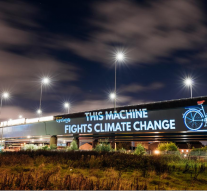
COP26 and the green transition at global level
Employment and Social Affairs 29 October 2021Estimated time of reading: ~ 3 minutes
Five years after COP21 in Paris, when the world leaders took a commitment on containing global warming to 1,5 degrees Celsius, the awareness of the urgency to fight against climate change is increasingly widespread at global level. That’s why COP26, that will start in a few days in Glasgow, is crucial to assess the real commitments world countries are willing to implement in fighting climate change and in the green transition.
Europe is at the forefront in leading these efforts at global level: the European Union is indeed committed to becoming the first climate-neutral bloc in the world by 2050; this requires significant investment from both the EU and the national public sector and the private sector. During the Covid-19 pandemic, the EU leaders reached an historic agreement: the European Council decided to mobilise 750 billion euros to help European economic recovery through the Recovery and Resilience Fund, starting in 2021.
To access these funds, EU Member States need to submit National Recovery and Resilience Plans (NRRPs) to the European Commission aligned with the countries’ National Energy and Climate Plans (NECPs) and the new higher climate targets to boost sustainable and inclusive recovery. Each NRRP’s must dedicate at least 37% of expenditure to investments and reforms that support climate objectives. The enormous amount of money mobilized in these efforts, and the big fraction of it devoted to green transition, highlights the importance the EU conveys to these targets.
Reaching these goals, means that a wider global commitment is needed. “I think there is a general willingness even with those more reluctant on the issue to contribute to the success of Glasgow”, EU climate envoy, Frans Timmermans, recently underlined.
China and India, the world’s top two coal producers, still rely on coal-fired power stations for a Five years after COP21 in Paris, when the world leaders took a commitment on containing global warming to 1,5 degrees Celsius, the awareness of the urgency to fight against climate change is increasingly widespread at global level. That’s why COP26, that will start in a few days in Glasgow, is crucial to assess the real commitments world countries are willing to implement in fighting climate change and in the green transition.
Europe is at the forefront in leading these efforts at global level: the European Union is indeed committed to becoming the first climate-neutral bloc in the world by 2050; this requires significant investment from both the EU and the national public sector and the private sector. During the Covid-19 pandemic, the EU leaders reached an historic agreement: the European Council decided to mobilise 750 billion euros to help European economic recovery through the Recovery and Resilience Fund, starting in 2021.
To access these funds, EU Member States need to submit National Recovery and Resilience Plans (NRRPs) to the European Commission aligned with the countries’ National Energy and Climate Plans (NECPs) and the new higher climate targets to boost sustainable and inclusive recovery. Each NRRP’s must dedicate at least 37% of expenditure to investments and reforms that support climate objectives. The enormous amount of money mobilized in these efforts, and the big fraction of it devoted to green transition, highlights the importance the EU conveys to these targets.
Reaching these goals, means that a wider global commitment is needed. “I think there is a general willingness even with those more reluctant on the issue to contribute to the success of Glasgow”, EU climate envoy, Frans Timmermans, recently underlined.
China and India, the world’s top two coal producers, still rely on coal-fired power stations for a big share of their electricity supply. “We’re in a very constructive dialogue with India and China. There is a wish by both countries to be part of the success,” Timmermans said. Even Russia, which heavily relies on fossil fuels exports and is currently the fourth-highest emitter of carbon, must play its part.
The EU sees Moscow as a key partner for reducing global emissions and stemming the effects of climate change, but the Kremlin feels proposals such as a carbon border tax, would unfairly target Russia. Russia has vowed to cut its emissions to 70% of 1990 levels by 2030 – a target it is expected to meet because of the de-industrialization the country has undergone since the fall of the Soviet Union in 1991.
Putin recently pledged Russia would reduce its emissions below the EU level and said the country would “aim” to become carbon neutral by 2060.big share of their electricity supply. “We’re in a very constructive dialogue with India and China. There is a wish by both countries to be part of the success,” Timmermans said. Even Russia, which heavily relies on fossil fuels exports and is currently the fourth-highest emitter of carbon, must play its part.
The EU sees Moscow as a key partner for reducing global emissions and stemming the effects of climate change, but the Kremlin feels proposals such as a carbon border tax, would unfairly target Russia. Russia has vowed to cut its emissions to 70% of 1990 levels by 2030 – a target it is expected to meet because of the de-industrialization the country has undergone since the fall of the Soviet Union in 1991. Putin recently pledged Russia would reduce its emissions below the EU level and said the country would “aim” to become carbon neutral by 2060.
Glasgow COP26 will not count on the presence of the president of China and Russia, Xi Jinping and Vladimir Putin. Although Beijing and Moscow seem to be willing to contribute to the fight against global change, the pace of implementation of this commitment could not be rapid as the one impressed by the Eu and as the one globally needed.
Written by: Valerio Palombaro
Submitted on: 27.10.2021.



